Keep Exploring
When you make a purchase from Seed Savers Exchange, you help fulfill our nonprofit mission to protect our food and garden heritage.
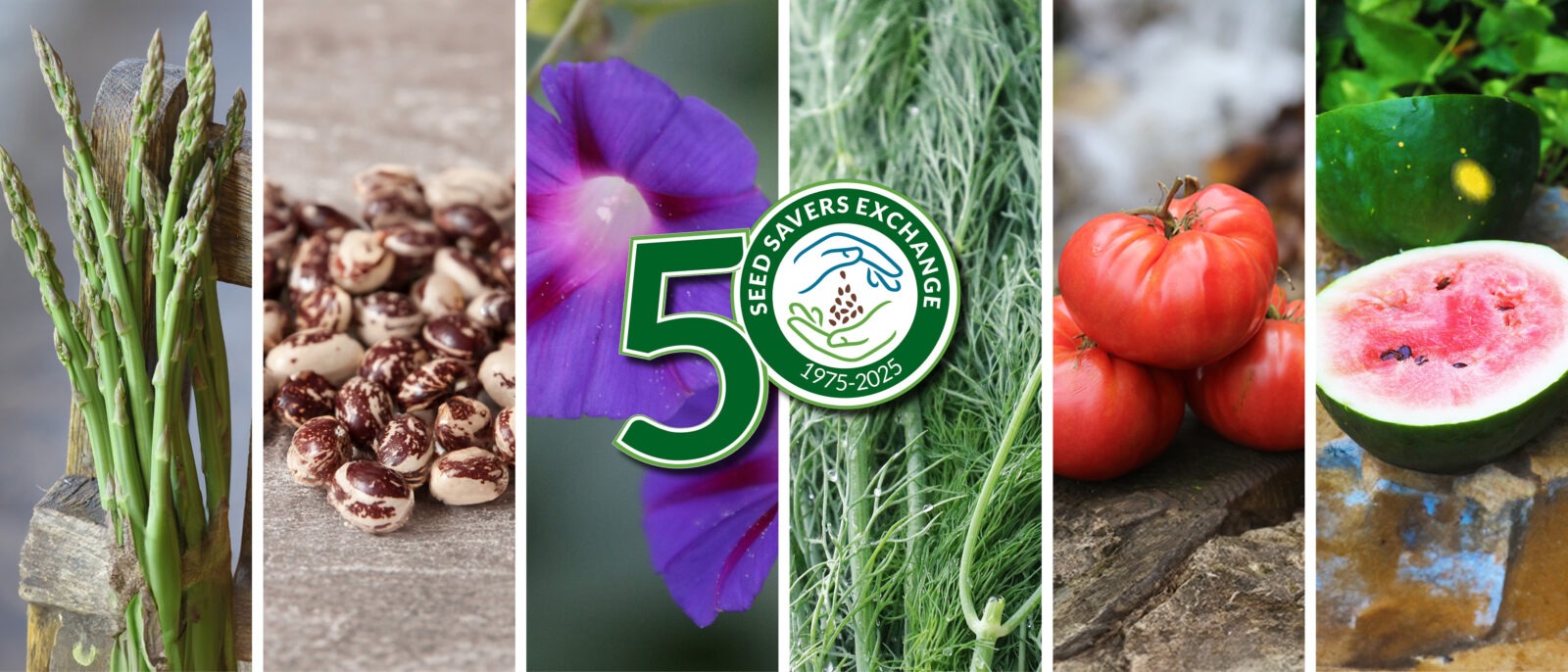
Great seeds, great seed stories. Seed Savers Exchange has stewarded both since its founding in 1975. To mark our 50th year, we’ve released a limited-edition heirloom seed collection featuring six of our most-cherished varieties.
These six heirloom seed varieties feature some of SSE’s best seed stories, including the two varieties that started it all: the ‘German Pink’ tomato and the ‘Grandpa Ott’s’ morning glory.
The 50th Anniversary Seed Collection contains one packet of each variety:
Please note: In the event of a seed packet shortage, we will substitute a variety. Rest assured—you’re still getting six great varieties!
Keep reading to learn more about each storied variety in this collection.
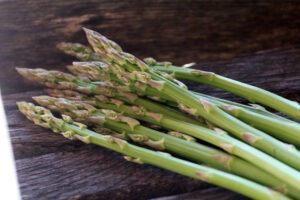
Diane Ott Whealy and Kent Whealy, SSE’s co-founders, brought this variety with them when they moved to Decorah, Iowa, in 1984. Diane planted the asparagus seeds in her own garden, and in 1985 transplanted some of the small crowns into a patch next to the historic barn at Heritage Farm, where the same patch still flourishes 40 years later.
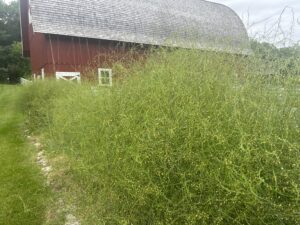
Diane recounts the origin of ‘Three Pound Coffee Can’ in her memoir, Gathering: “A few years earlier, a gentleman had sent me a three-pound Folgers coffee can full of seed. He said the plants were always grown from seed and rivaled any commercial variety, but they came to me with no name. His claim was true. These plants were eventually transplanted to a patch in front of the barn at Heritage Farm and 20 years later have developed into a magnificent bed. One good thing about growing older: your asparagus patch gets better.”
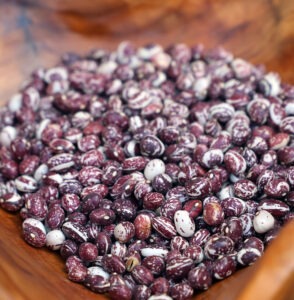
‘Good Mother Stallard’ is one of 1,186 bean varieties donated to SSE in 1981 by bean collector John Withee. Named for Carrie Belle Stallard of Wise County, Virginia, this bean dates to at least the 1930s. This very productive pole bean is maroon splashed with white and has a wonderful rich and meaty flavor.
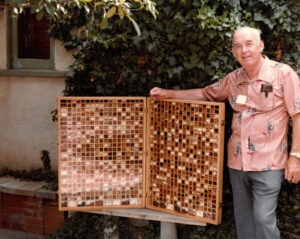
John Withee (1910-93) was an adventurer, a photographer, a dedicated family man, and, of course, a bean collector. He dedicated nearly two decades of his life to curating one of the largest personal collections of garden beans in the United States.
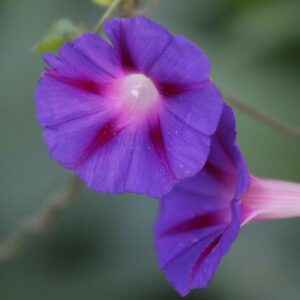
One of two plants that inspired the creation of Seed Savers Exchange, this morning glory bears beautiful, deep-purple flowers with red stars at their center. This self-sowing annual can climb to 15 feet tall, if given a support to grow on.
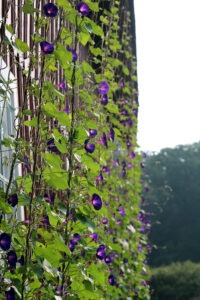
As a child growing up on a farm near Festina, Iowa, Diane Ott Whealy would frequently visit the nearby farm of her grandparents, Baptist John and Helena Hackman Ott. Diane recalled a thick wall of morning glory vines growing up twine strings covering the east side of her grandparents’ porch.
Years later, when Diane was planting a garden of her own, she asked her Grandpa Ott for some of his seeds. Grandpa Ott returned with the morning glory seeds, as well as some ‘German Pink’ tomato seeds, and said that the seeds were brought over from Bavaria, Germany, by his own parents when they immigrated to Iowa in the 1800s.
Today ‘Grandpa Ott’s’ morning glory grows up twine strings on the side of the historic barn at SSE’s Heritage Farm.
Read more about ‘Grandpa Ott’s’ morning glory.
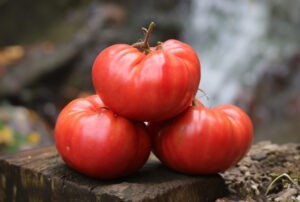
Along with ‘Grandpa Ott’s’ morning glory, the ‘German Pink’ tomato is one of the two founding varieties of Seed Savers Exchange. Each year, Diane’s grandparents grew a whole row of ‘German Pink’ tomatoes. When visiting her grandparents’ farm, Diane recalls eating slices of the ‘German Pink’ with sugar, served on a white platter after harvesting.
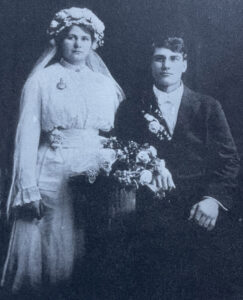
‘German Pink’ tomato seeds were given to Diane by her Grandpa Ott, whose own parents brought the seeds to Iowa from Bavaria when they immigrated in the 1800s. Diane still grows ‘German Pink’ tomatoes every year in her garden at Heritage Farm.
Read more about the ‘German Pink’ tomato.
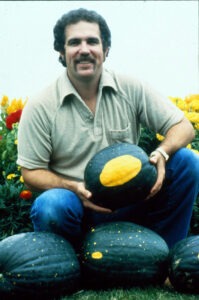
For several years, Kent Whealy and Diane Ott Whealy searched for the famed ‘Moon & Stars’ watermelon, a deep-green watermelon with bright-yellow blotches of various sizes (the moons and stars). The melon had been offered by two Midwest commercial seed sources in the 1930s, but had since fallen off the market.
In 1981, the Whealys were interviewing with their local TV station. When asked the question of if there were any seeds SSE members had been unable to locate, Kent mentioned the ‘Moon & Stars’ watermelon.
After the interview aired, the Whealys received a letter from Merle Van Doren, whose father had grown the ‘Moon & Stars’ watermelon in Tennessee. Merle himself had been growing and saving ‘Moon & Stars’ seeds on his Missouri farm for as long as he could remember, and invited the Whealys to visit for some seeds.
Kent and Diane distributed the watermelon seeds to more than 100 members, and the ‘Moon & Stars (Van Doren)’—along with other variants—joined the commercial seed trade once more.
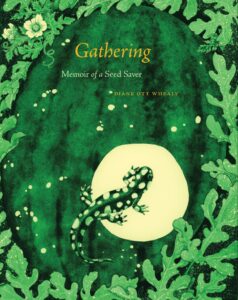
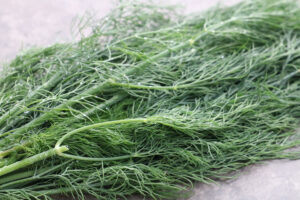
A fast-growing, easy-to-grow annual native to the Mediterranean, ‘Bouquet’ dill has been a staple in herb gardens for centuries. Plants grow 30–36 inches tall, with dark-green, fern-like foliage and large, airy flower heads that span up to six inches across. Leaves have a delicate flavor, while the flowers bring a more intense herbal note; the seeds provide a pungent, slightly bitter spice. All parts are edible.
PLEASE NOTE: Due to a seed shortage, ‘Bouquet’ dill is included in this anniversary collection instead of ‘Grandma Einck’s’ dill, an herb long grown in Diane Ott Whealy’s family. Read more about ‘Grandma Einck’s’ dill here.
“Heirloom” describes a seed’s heritage, specifically a documented heritage being passed down from generation to generation within a family or community. Each variety in the 50th Anniversary Seed Collection is a treasured heirloom with a special connection to SSE history.
While some organizations label seeds as heirlooms according to dates—for example, a variety that dates back more than five decades—Seed Savers Exchange identifies heirlooms by verifying and documenting the generational history of preserving and passing on the seed, emphasizing the seed’s tie to a specific group of people. (Varieties introduced to the United States seed trade before 1950, meanwhile, are labeled as “historic” at Seed Savers Exchange.)
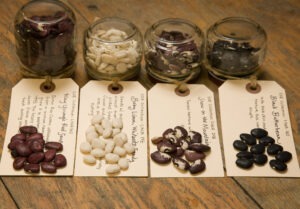
Heirloom seeds constitute a critical part of the nation’s agricultural heritage and help ensure genetic diversity of plant species. Founded in 1975, Seed Savers Exchange helped pioneer the heirloom seed movement and continues its work to preserve, circulate, and sell rare and heirloom seeds to this day. Today, Seed Savers Exchange cares for a collection of more than 20,000 seed varieties.
Learn more about heirloom seeds.
“We can only preserve seeds through active stewardship. If we don’t use them, if we don’t allow them to grow again, they become lost.” —Diane Ott Whealy
The best way to keep an heirloom seed variety alive is to grow and save its seeds. By stewarding the treasured varieties in the 50th Anniversary Seed Collection, you become an important part of each seed’s history—and help SSE carry out its mission to steward America’s culturally diverse and endangered garden and food crop legacy for present and future generations.
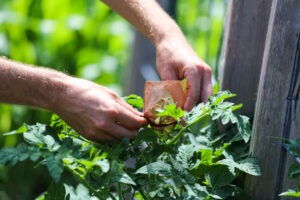
We are here to help you become a seed saver! Check out these resources to get started:
Keep Exploring
When you make a purchase from Seed Savers Exchange, you help fulfill our nonprofit mission to protect our food and garden heritage.